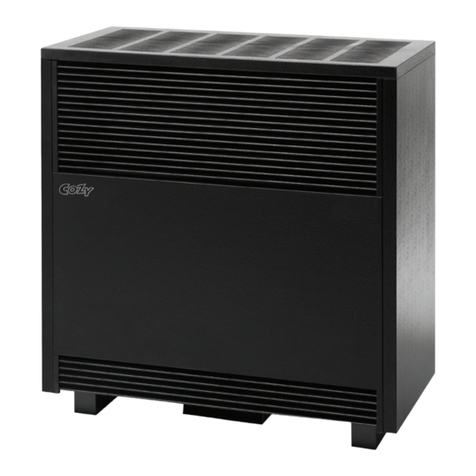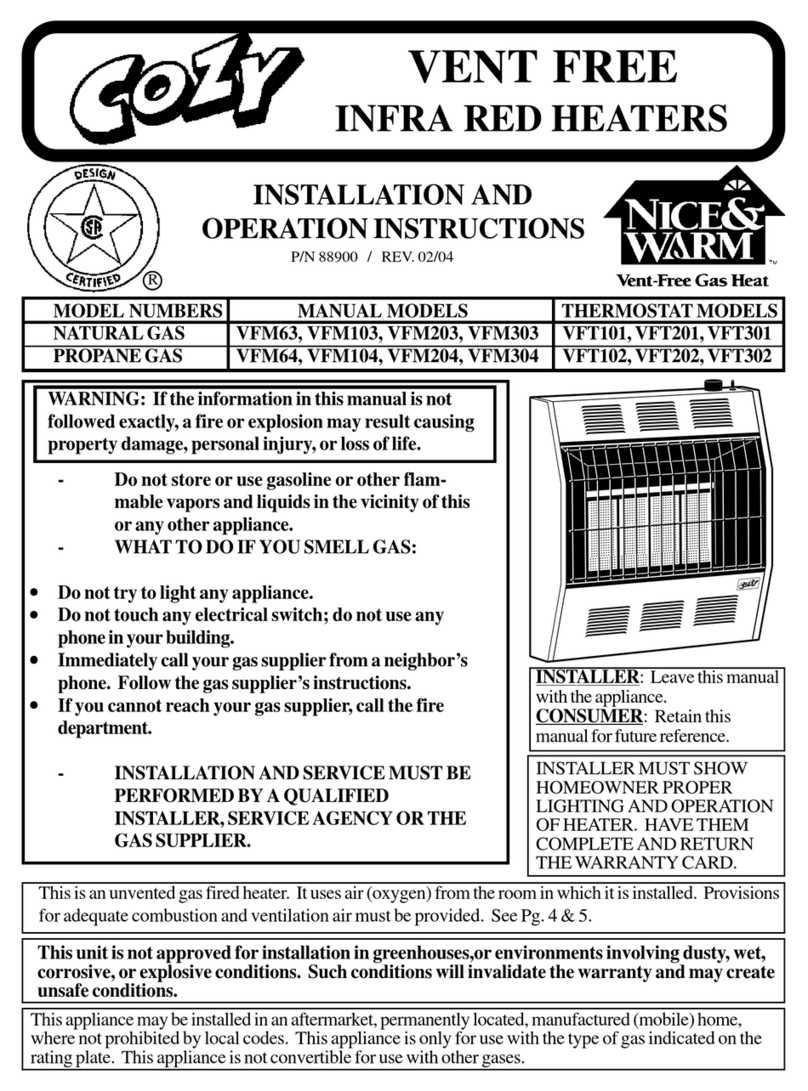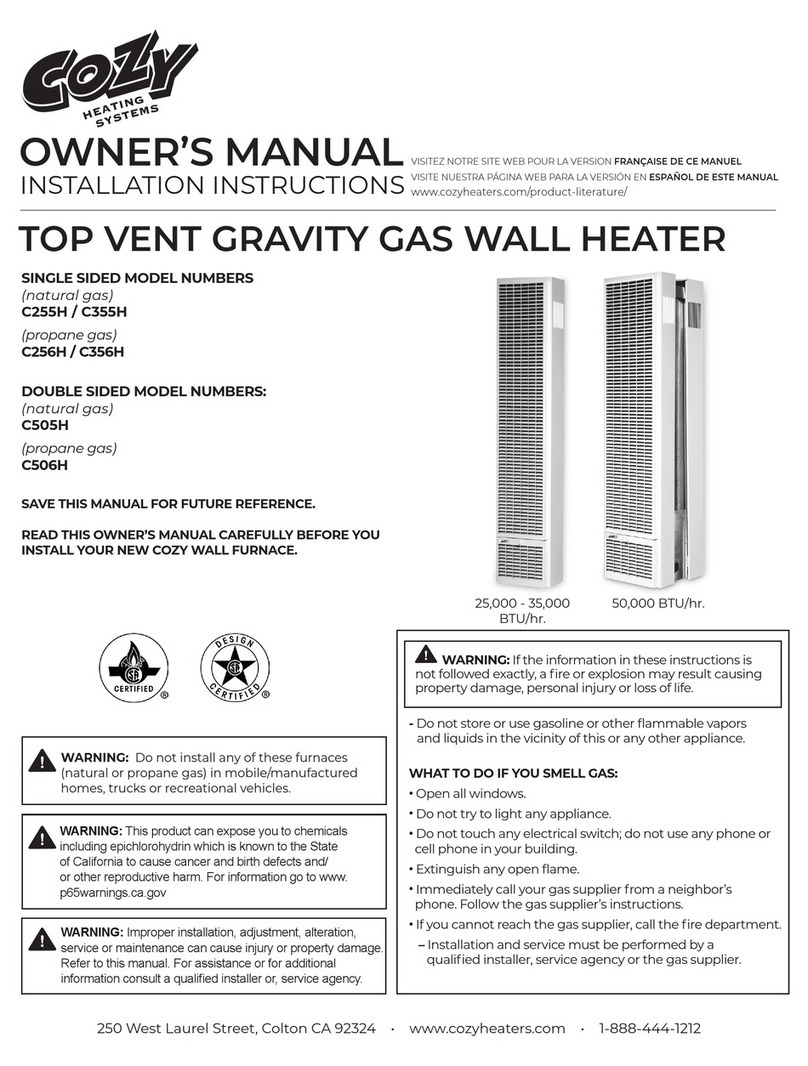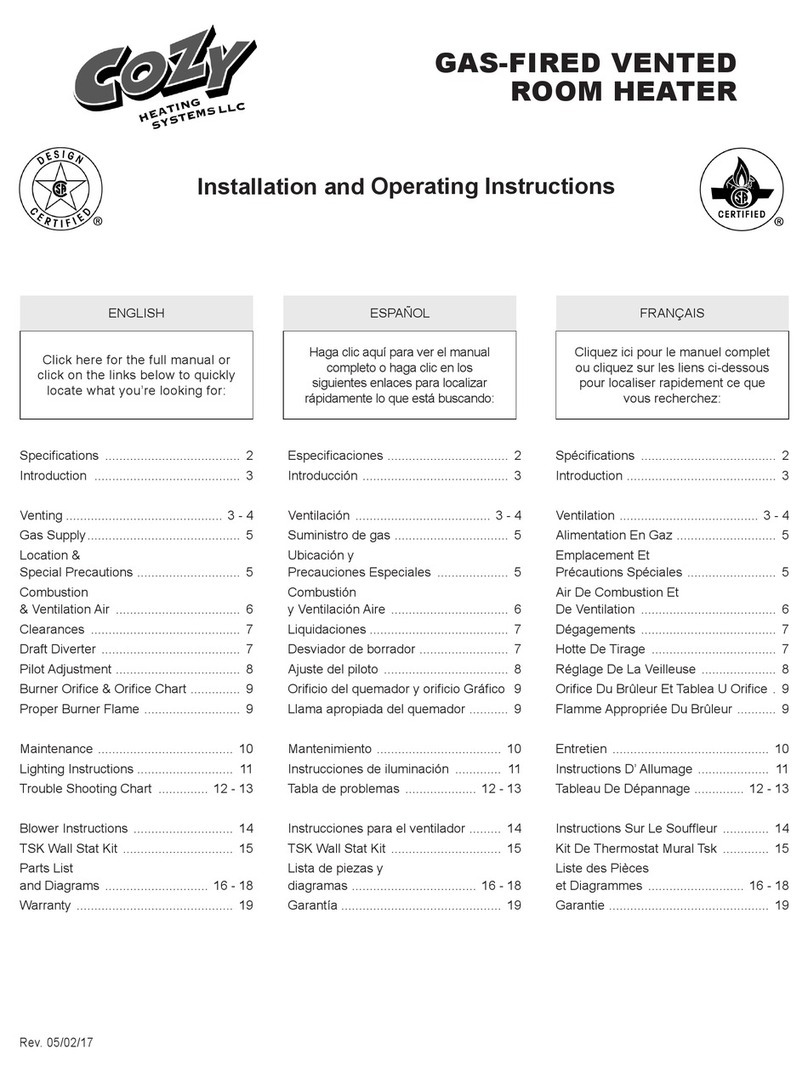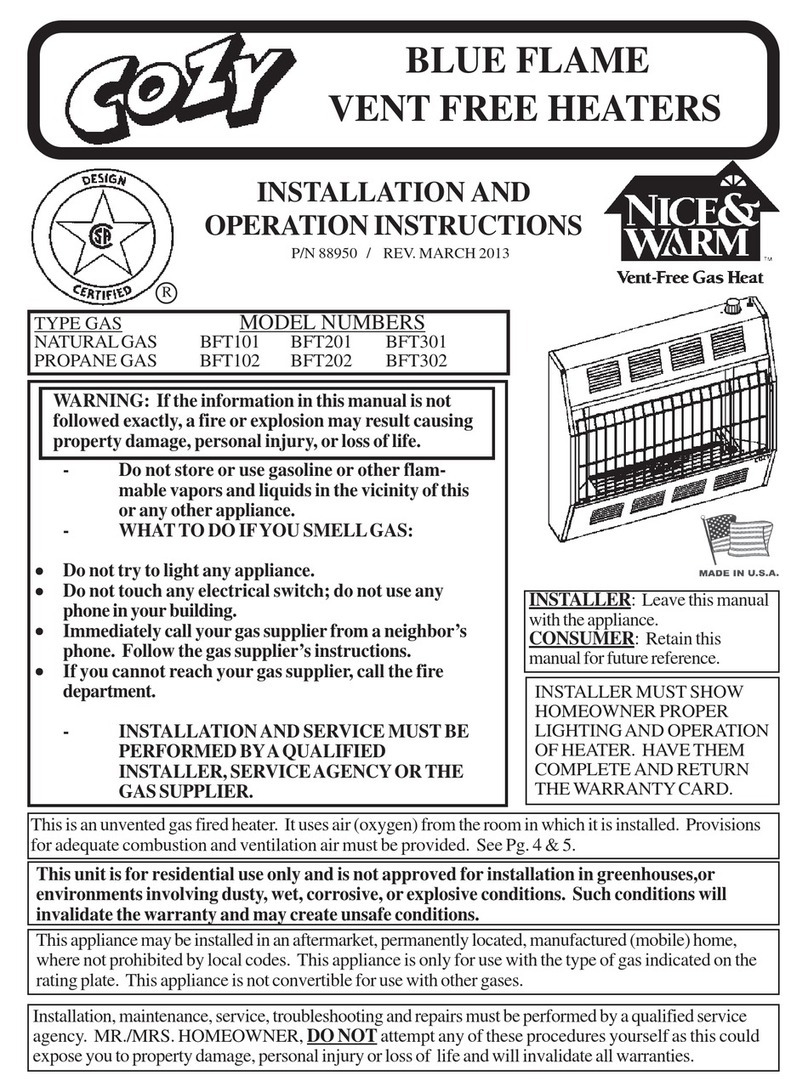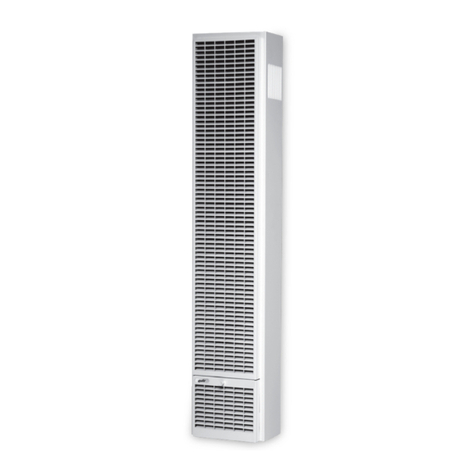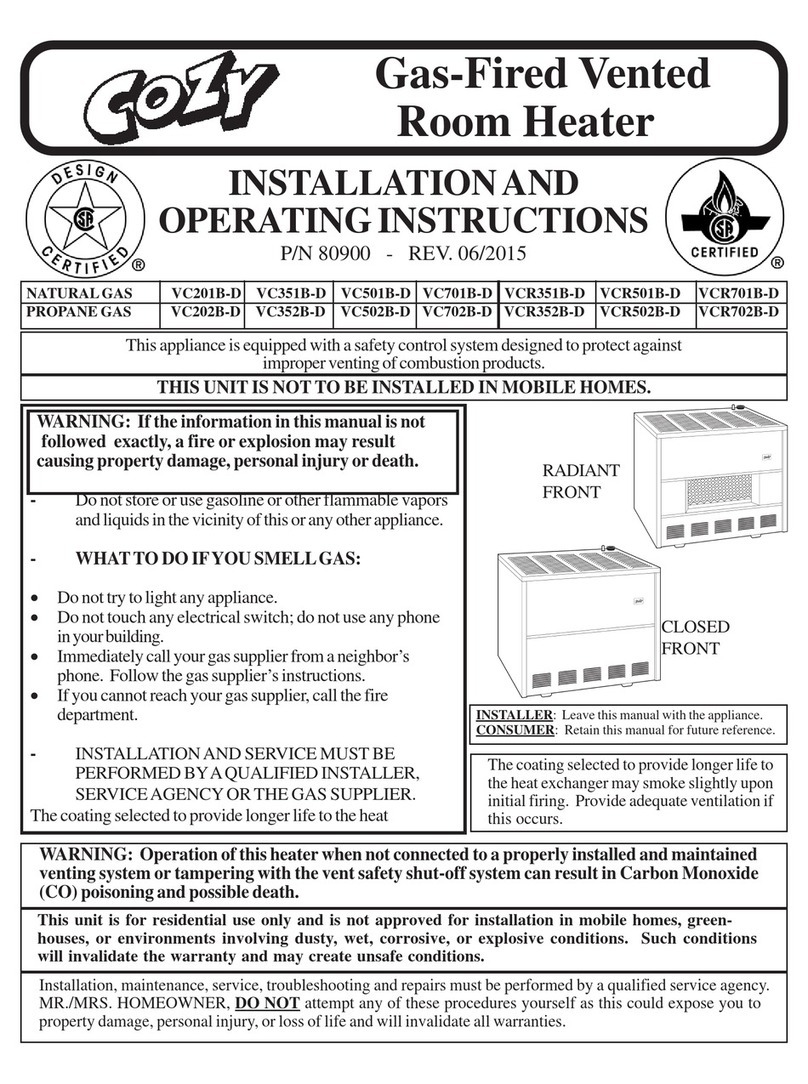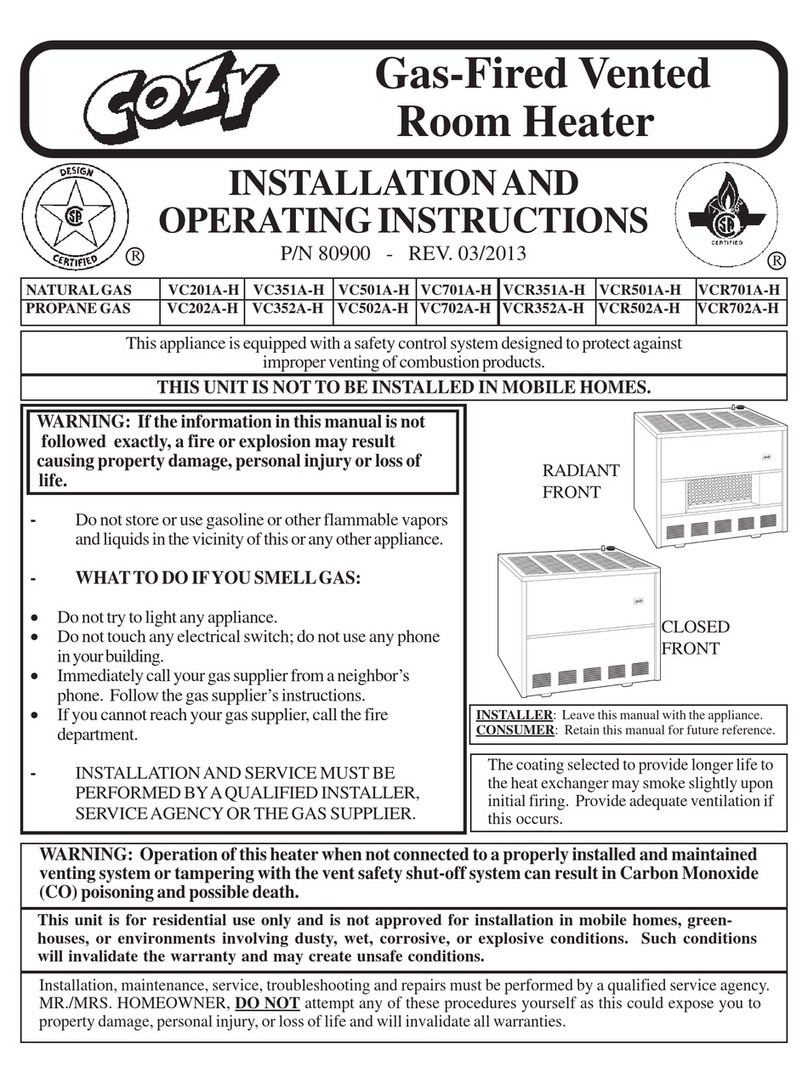
SAFETY RULES
1. Improper installation, adjustment, alteration, service, or maintenance can cause property damage, bodily
injury, or death.
2. Use in other than a residential application may result in unsatisfactory performance and may void the
warranty.
3. Follow all applicable codes and ordinances. If there are none, follow the latest edition of National Fuel
Gas Code ANSI Z223.1 A copy may be obtained from the CSA International, or the National Fire Protec-
tion Association, Batterymarch Park, Quincy, MA. 02269. In Canada, use latest edition of CAN1-B149
installation code.
4. DO NOT INSTALL THIS FURNACE IN A RECREATIONAL VEHICLE OR TRAILER.
5. Do not operate wall furnace unless it is connected to the supplied vent system with vent cap in place.
6. Check the rating label attached to the wall furnace to be sure it is equipped for the type gas you intend to
use.
7. Never use a match, candle, flame or other source of ignition to check for gas leaks. Use only soapy water
or liquid detergent.
8. Have your wall furnace and vent system inspected at least annually by a qualified service technician.
9. Before cleaning or servicing, turn off the gas and allow furnace to cool.
10. Do not operate wall furnace without all components properly installed (top, front, etc.).
11. Due to high temperatures, the wall furnace should be located out of traffic and away from furniture and
drapes.
12. Children and adults should be alerted to the hazard of high surface temperature and should be kept away to
avoid burns or clothing ignition.
13. Young children should be carefully supervised when they are in the same room with the wall furnace.
14. Do not place clothing or other flammable material on or near the furnace.
15. INSTALLATION AND REPAIR SHOULD BE DONE BYA QUALIFIED SERVICE PERSON. THE
WALL FURNACE SHOULD BE INSPECTED BEFORE USE AND AT LEAST ANNUALLY BY A
PROFESSIONAL SERVICE PERSON. More frequent cleaning may be required
due to excessive lint from carpeting, bedding material, etc. It is imperative that control compartments,
burner, and circulating air passageways of the furnace be kept clean.
16. Do not install in a closet, alcove, or small hallway where the furnace could be isolated from the space to
be heated by closing a door.
17. Do not put anything around the furnace or vent cap that will obstruct the flow of combustion and
ventilation air.
18. The appliance, when installed, must be electrically grounded in accordance with local codes or, in the
absence of local codes, with the latest edition of National Electrical Code,ANSI/NFPA 70. In Canada, use
CSA C22.1.
19. Never operate this furnace without the sight glass in place or with the glass broken or missing.
20. If it is suspected that rising water may enter the furnace, turn off the gas immediately.
21. Do not use the appliance if any part has been under water. Immediately call a qualified service technician
to inspect the appliance and to replace any part of the control system and any gas control which has been
under water.
22. It is necessary to replace damaged gaskets or sealing material within the vent or air intake system. Failure
to do so may result in property damage, personal injury or loss of life.
23. Any safety screen or guard removed for servicing must be replaced prior to operating heater.
24. This appliance must not be connected to a chimney flue serving a separate solid fuel burning appliance.
Page 3



















